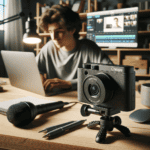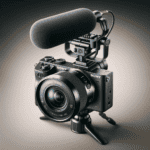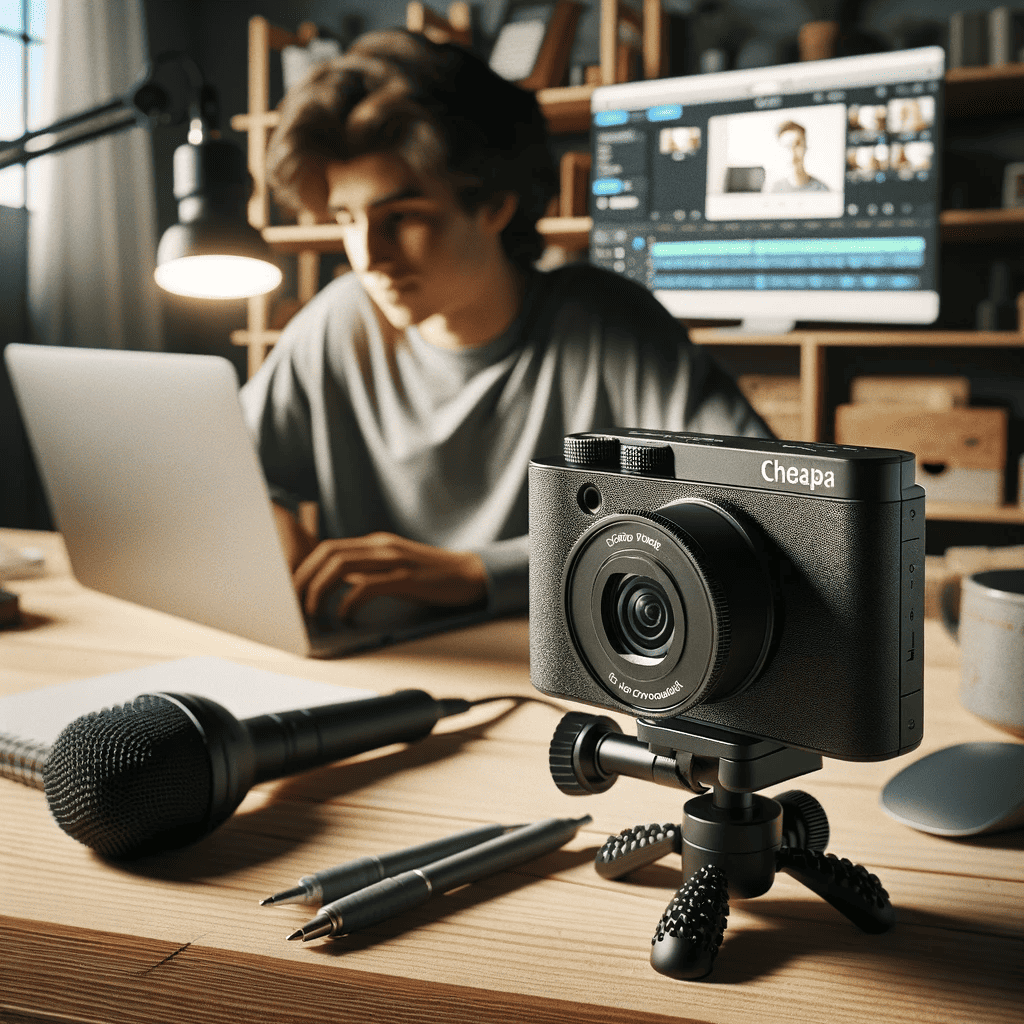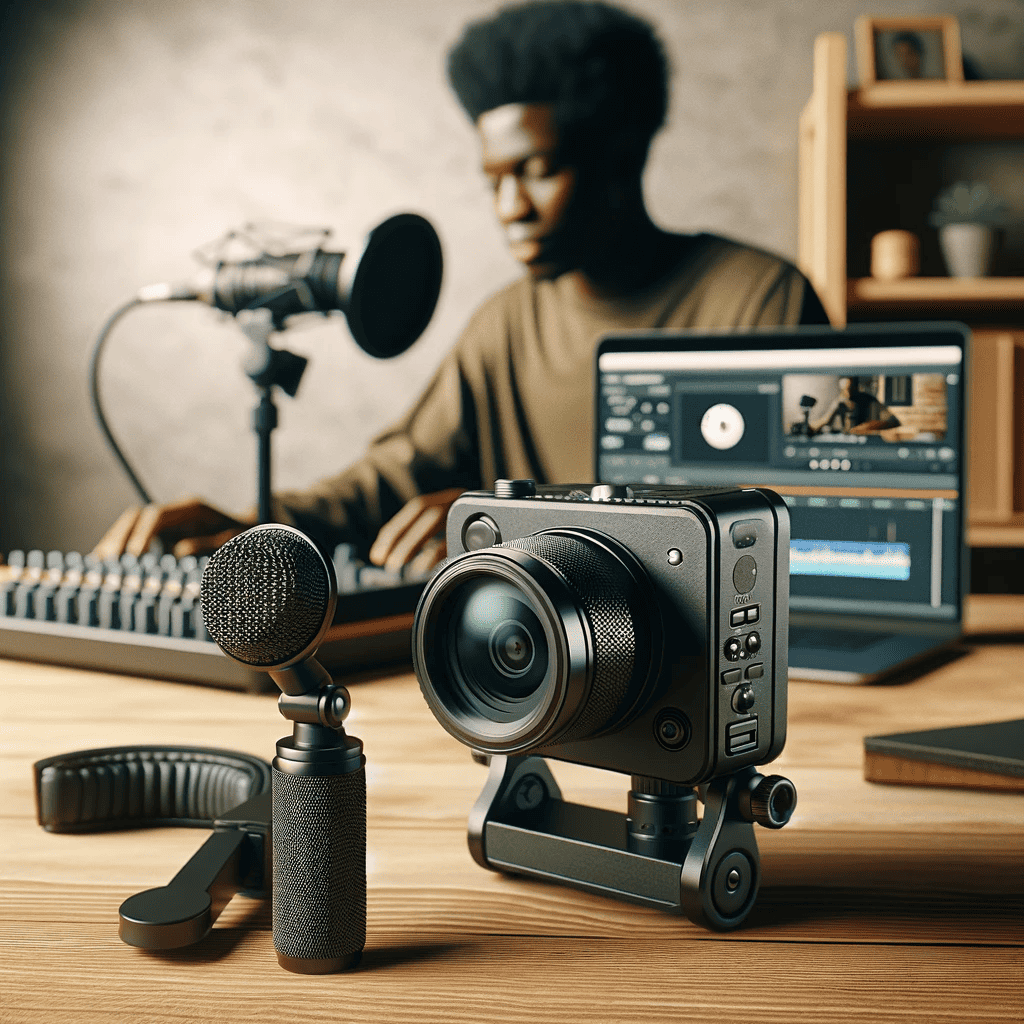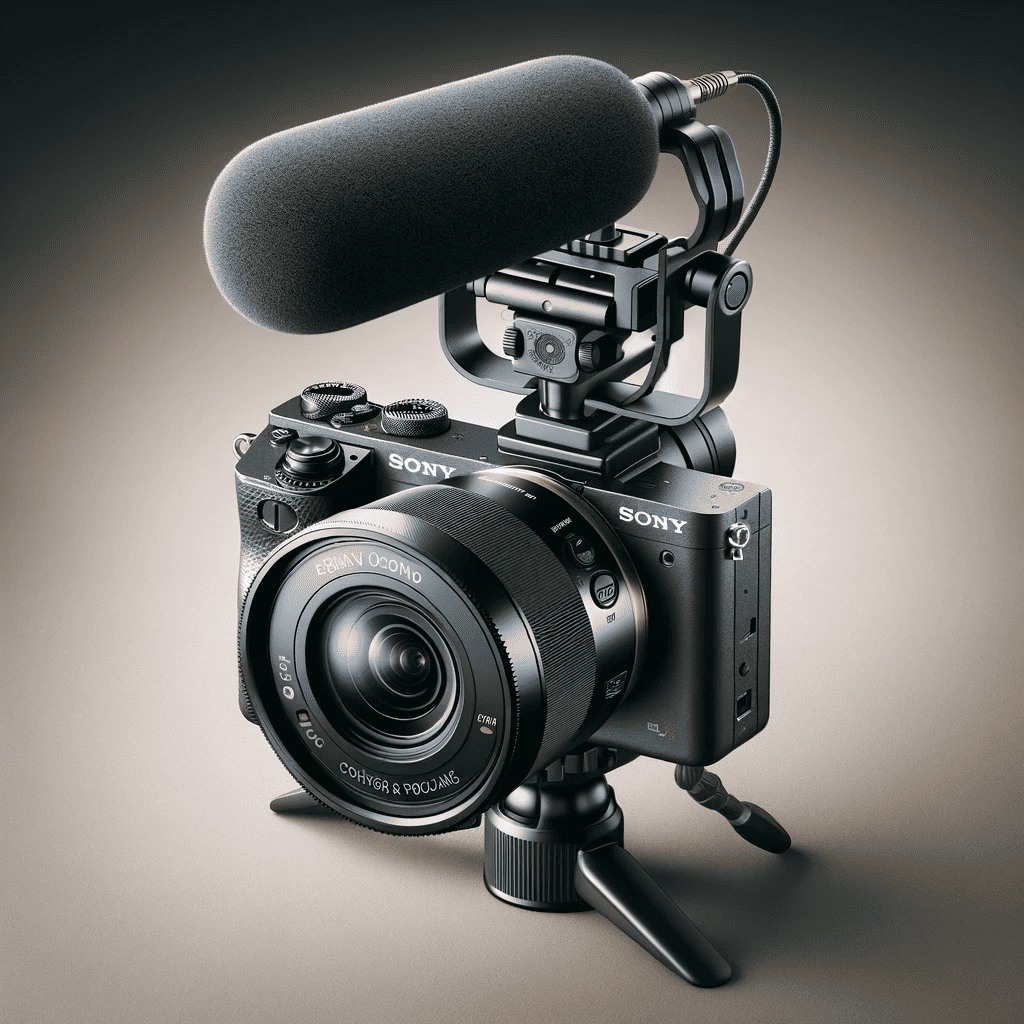Introduction
The Power of Digital Cameras in Architectural Photography
Digital cameras have revolutionized the field of architectural photography, offering photographers unprecedented control and creative possibilities. With their advanced technology and high-resolution sensors, digital cameras have become essential tools for capturing the intricate details, textures, and grandeur of architectural marvels. They enable photographers to showcase buildings, structures, and spaces with remarkable clarity, accuracy, and depth.
Key Factors to Consider When Choosing a Camera for Architecture

When selecting a camera for architectural photography, several crucial factors should be taken into consideration. Firstly, resolution plays a vital role in capturing fine details and maintaining sharpness in images. A higher resolution sensor allows for larger prints without compromising quality.
Secondly, dynamic range is crucial to accurately capture both highlight and shadow details in high-contrast scenes often encountered in architecture. Cameras with excellent dynamic range help preserve the textures and nuances present within various architectural elements.
Additionally, lens selection is critical since architectural photography often demands capturing wide-angle shots with minimal distortion. The ability to use tilt-shift lenses or correct distortion effectively becomes an advantage when choosing a camera system for architecture.
Digital cameras have transformed architectural photography by providing enhanced control over image quality and creative options that were previously unimaginable with traditional film cameras. When selecting a camera for architecture, factors such as resolution, dynamic range capabilities, and lens options should be carefully considered to ensure optimal results in capturing the beauty of architectural structures.
Canon EOS 5DS R
Description and Key Features
The Canon EOS 5DS R is a high-resolution DSLR camera designed specifically for professional architectural photography. It boasts a impressive 50.6-megapixel full-frame sensor, which enables it to capture stunningly detailed images with exceptional clarity and sharpness. Equipped with the Canon EF lens mount, the camera offers a wide range of compatible lenses, allowing photographers to achieve various focal lengths and perspectives.
Benefits for Architectural Photography
The Canon EOS 5DS R excels in architectural photography due to its extraordinary resolution. Its high megapixel count enables photographers to capture intricate details of buildings, structures, and interior spaces, making it perfect for capturing fine textures, patterns, and subtle nuances in design elements. The camera’s low pass filter cancellation feature further enhances image sharpness by eliminating any blurring effects caused by the anti-aliasing filter.
Additionally, the camera offers excellent dynamic range performance, allowing it to capture a wide range of tones from deep shadows to bright highlights without losing detail. This is especially beneficial when shooting architecture where lighting conditions can be challenging and there are stark contrasts between light and shadow areas.
Sample Images Showcasing its Capabilities
Sample Image 1: A close-up shot of an intricately carved architectural element showcases the camera’s ability to capture fine details with impressive sharpness. Sample Image 2: A wide-angle shot of an urban skyline demonstrates the camera’s exceptional resolution in capturing expansive scenes while maintaining clarity in individual buildings. Sample Image 3: An interior photograph captures the intricate play of light and shadow in an architecturally designed space, highlighting the camera’s dynamic range capabilities.
Nikon D850
Description and Key Features
The Nikon D850 is a flagship DSLR camera renowned for its versatility and exceptional image quality. It features a powerful 45.7-megapixel full-frame sensor, delivering stunningly detailed images with rich colors and remarkable clarity. The camera’s Nikon F mount provides compatibility with a wide range of high-quality lenses, allowing photographers to explore different focal lengths and perspectives.
Advantages for Architectural Photography
The Nikon D850 offers several advantages that make it well-suited for architectural photography. Its high resolution allows photographers to capture intricate details of buildings and structures with exceptional sharpness and accuracy. The camera’s robust dynamic range capabilities enable it to handle challenging lighting situations often encountered in architectural photography, preserving details in both highlight and shadow areas.
Moreover, the D850 incorporates advanced image stabilization technology, reducing the risk of blur caused by camera shake when shooting handheld or utilizing longer exposure times. This feature is particularly useful when photographing interior spaces without the need for a tripod.
Sample Images Highlighting its Strengths
Sample Image 1: A photograph capturing the grandeur of an architectural masterpiece showcases the camera’s ability to render fine textures, intricate lines, and vivid colors. Sample Image 2: An exterior shot of a contemporary building under vibrant sunlight demonstrates the camera’s excellent dynamic range by preserving details in both bright highlights and deep shadows. Sample Image 3: An indoor shot featuring an architecturally designed space with complex lighting shows the D850’s capability to produce clean images with minimal noise even at higher ISO settings.
Medium Format Cameras
Definition and advantages in architectural photography. Medium format cameras are professional-grade cameras that use larger image sensors compared to traditional full-frame or APS-C cameras.
These larger sensors provide several advantages for architectural photography. They offer higher resolution, allowing for more detailed and sharper images.
The increased dynamic range helps capture a wider range of light and shadow, essential for architectural shots with varying levels of brightness. The larger sensor size also enables better low-light performance, reducing noise and maintaining image quality in challenging lighting conditions.
Hasselblad H6D-100c: Features, benefits, and sample images
The Hasselblad H6D-100c is a top-tier medium format camera renowned for its exceptional image quality. It boasts a staggering 100-megapixel resolution, delivering astonishing levels of detail to capture the intricate elements of architecture. With its large sensor size, it excels at reproducing accurate colors and tones while minimizing noise even at high ISOs.
The benefits of using the Hasselblad H6D-100c in architectural photography go beyond just resolution. Its ergonomic design provides comfort during extended shooting sessions, ensuring precise control over composition and focus.
The camera’s advanced lens lineup offers excellent optics with minimal distortion or aberrations. This combination of superior image quality, versatility, and reliability makes the Hasselblad H6D-100c an ideal choice for photographers seeking uncompromising results in architectural photography.
Phase One XF IQ4: Description, unique capabilities, and sample images
The Phase One XF IQ4 is another remarkable medium format camera designed specifically for professional architectural photographers who demand the utmost precision and image quality. Featuring a massive 150-megapixel sensor—the highest resolution available—it delivers unparalleled detail that captures every nuance of architecture with stunning clarity. In addition to its impressive resolution, the Phase One XF IQ4 offers a range of unique capabilities that enhance architectural photography.
Its advanced sensor technology ensures exceptional color accuracy and tonal range, enabling photographers to reproduce architectural spaces faithfully. The camera’s intelligent image processing algorithms minimize noise, resulting in clean, noise-free images even in low-light situations.
Sample images taken with the Phase One XF IQ4 showcase its extraordinary capabilities, from capturing intricate architectural details to rendering textures and materials with astonishing fidelity. For professional architectural photographers who prioritize uncompromising quality and desire the most cutting-edge technology, the Phase One XF IQ4 is an exceptional choice.
Tilt-Shift Lenses

Definition and importance in architectural photography. Tilt-shift lenses are specialized lenses that allow photographers to control perspective distortion and depth of field in architectural photography.
These lenses have adjustable elements that enable both tilting (changing the angle of the lens plane relative to the image sensor) and shifting (moving the lens parallel to the image plane). This versatility provides significant advantages when photographing buildings or structures where maintaining straight vertical lines is crucial.
Canon TS-E lenses: Overview, features, and sample images
Canon’s TS-E (Tilt-Shift) lens line-up offers a comprehensive range of tilt-shift lenses designed specifically for architectural photography. These lenses provide precise control over perspective distortion correction, allowing photographers to capture buildings without converging vertical lines or other undesirable distortions.
They also offer selective focus capabilities by controlling depth of field. Featuring high-quality optics and robust build quality, Canon TS-E lenses are renowned for their sharpness and minimal aberrations.
Additionally, they have large rotation angles for tilt and shift movements, giving photographers extensive creative control over composition. Sample images taken with Canon TS-E lenses showcase their ability to capture architecture with impeccable precision while preserving accurate proportions.
Nikon PC-E lenses: Description, benefits, and sample images
Nikon’s PC-E (Perspective Control) lens series is designed to meet the needs of architectural photographers seeking precise control over perspective and depth of field. These lenses offer tilt, shift, and rotation capabilities for unparalleled flexibility in correcting distortions and achieving desired focus effects.
The benefits of Nikon PC-E lenses extend beyond their excellent perspective control. They feature high-quality optics that deliver sharpness, clarity, and accurate color reproduction.
With manual focus capability, photographers can fine-tune every aspect of their shots to ensure optimal results. Sample images taken with Nikon PC-E lenses demonstrate their ability to capture architectural details flawlessly while maintaining natural-looking perspectives.
In architectural photography, tilt-shift lenses are indispensable tools for achieving perspective correction and creative focus effects. Both Canon TS-E lenses and Nikon PC-E lenses offer exceptional precision and versatility to elevate architectural compositions to new heights.
Rarely Known Small Details: Lesser-Known Tips & Tricks for Architectural Photography with Digital Cameras
Camera Settings: White balance adjustments for accurate color representation
Accurate color representation is crucial in architectural photography to showcase the true essence of the structures. To achieve this, adjust the white balance settings on your digital camera. Use the camera’s presets (such as daylight, cloudy, or fluorescent) to match the prevailing light conditions.
Alternatively, manually set the white balance by taking a reference photo of a neutral gray card or using a custom white balance feature available on many cameras. This ensures that colors appear natural and vibrant without any unwanted color casts.
Camera Settings: Exposure bracketing techniques to capture high dynamic range (HDR) shots
Capturing architectural details often involves dealing with high contrast scenes, where there are significant differences in brightness between dark shadows and bright highlights. To overcome this challenge and achieve well-exposed images throughout the entire scene, use exposure bracketing techniques. Set your camera to auto-bracket mode or manually take multiple shots at different exposure levels – one for the highlights, one for mid-tones, and another for shadows.
Later on, during post-processing, you can merge these exposures into an HDR image using specialized software like Adobe Photoshop or Lightroom. This technique allows you to preserve details in both shadowed areas and highlights, resulting in a balanced photograph with rich tonal range.
Post-Processing Techniques: Lens correction tools to eliminate distortion and perspective issues
To ensure architectural photographs have straight lines and accurate perspectives without unwanted distortions caused by wide-angle lenses, employ lens correction tools during post-processing. These tools can be found in software like Adobe Photoshop or Lightroom. Correct lens distortion by using features such as “auto-correct” or manually adjusting parameters like distortion sliders until straight lines appear undistorted.
Additionally, fix perspective issues such as converging verticals or skewed horizons, especially when photographing tall buildings. Utilize features like “transform” or “perspective correction” to straighten vertical lines and restore the intended proportions of the architecture.
Post-Processing Techniques: Blending multiple exposures using software like Adobe Photoshop or Lightroom
To achieve optimal exposure and detail in different areas of an architectural photograph, blend multiple exposures during post-processing. Start by selecting the bracketed images captured earlier. Use specialized software like Adobe Photoshop or Lightroom’s HDR merge feature to automatically align and blend these exposures into a single image with enhanced tonal range.
Adjust blending settings to retain details from each exposure while creating a natural-looking final image. This technique is particularly useful when dealing with challenging lighting conditions where a single exposure cannot capture the full dynamic range of the scene.
By blending multiple exposures, you can ensure that both highlights and shadows are well-preserved, resulting in a well-balanced architectural photograph. Remember, mastering these rarely known tips and tricks will elevate your architectural photography skills with digital cameras, allowing you to capture stunning images that truly showcase the beauty of architecture.
Conclusion: Summary
The Power of the Right Camera for Architectural Photography
Choosing the best digital camera for architectural photography can greatly enhance your ability to capture stunning images. In this article, we explored some of the top options in the market, including the Canon EOS 5DS R and Nikon D850.
These cameras offer exceptional resolution, dynamic range, and functionality specifically tailored for architectural photography. Additionally, we delved into specialized cameras and lenses such as medium format cameras like Hasselblad H6D-100c and Phase One XF IQ4, as well as tilt-shift lenses from Canon and Nikon.
Tips & Tricks to Elevate Your Architectural Photography
To further improve your architectural photography skills, we discussed lesser-known details that can make a significant difference. Adjusting white balance settings ensures accurate color representation in your images.
Employing exposure bracketing techniques enables you to capture high dynamic range shots with greater detail in both shadows and highlights. In post-processing, lens correction tools help eliminate distortion and perspective issues that may arise when photographing buildings.
Blending multiple exposures using software like Adobe Photoshop or Lightroom allows you to create composite images with optimal lighting and details. By choosing the right digital camera for architecture and applying these tips and tricks throughout your photographic process, you will elevate your abilities to capture breathtaking architectural imagery.
Embrace your passion for architecture through photography and unlock endless artistic possibilities. Remember that practice makes perfect – so get out there, explore different angles, experiment with lighting techniques, and let your creativity soar!

